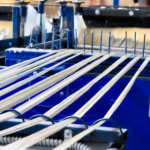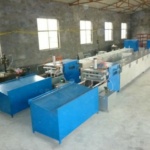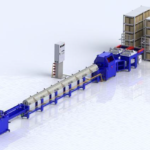Fiberglass rebar is made from roving (fibers of raw material), a binder – polymer resin, hardener and hardening accelerator. The specific ratio of materials depends on the temperature and humidity inside production premises.
The main advantage of COMPOSITE REBAR over standard concrete rebar is the composite’s lightweight attributes. On average, COMPOSITE REBAR is 10X lighter than concrete rebar. Because of the significant weight difference, the glass reinforced material is more economical, easier and faster to install. It also allows the composite to be cast in unlimited shapes and designs—including 3D designs. But this lightweight substitute for heavy concrete is not slight in the durable department. COMPOSITE REBAR has proven to be extremely durable and resilient. It can stand up to weather elements like heavy rain, wind, scorching sun and salt-water environments. As for winter, it is even more freeze thaw resistant than standard concrete so it won’t shrink as much as regular concrete.
The production line includes the following equipment:
1. The heating hopper – in it the fibers are heated to improve the adhesion with the resin;
2. Bath impregnating – roving impregnated with a mixture of resin and hardener;
3. The bale — pushing raw materials through a spinneret, the passage which formed the terminals of a given diameter;
4. The equipment for applying the sand, where the grains of sand evenly distributed over the surface of the rod and the excess removed by air flow;
5. Polymerization oven, where a set of design precision`s bars occurs;
6. Equipment for cooling products is a line with a length of 3-5 meters, located at the exit of the furnace polymerization;
7. Drawn out equipment, cutting mechanism and apparatus for winding bays — ready fiberglass rebar is cut into sections of the desired length or wound into commodity bays with a length of 50-100 m.




